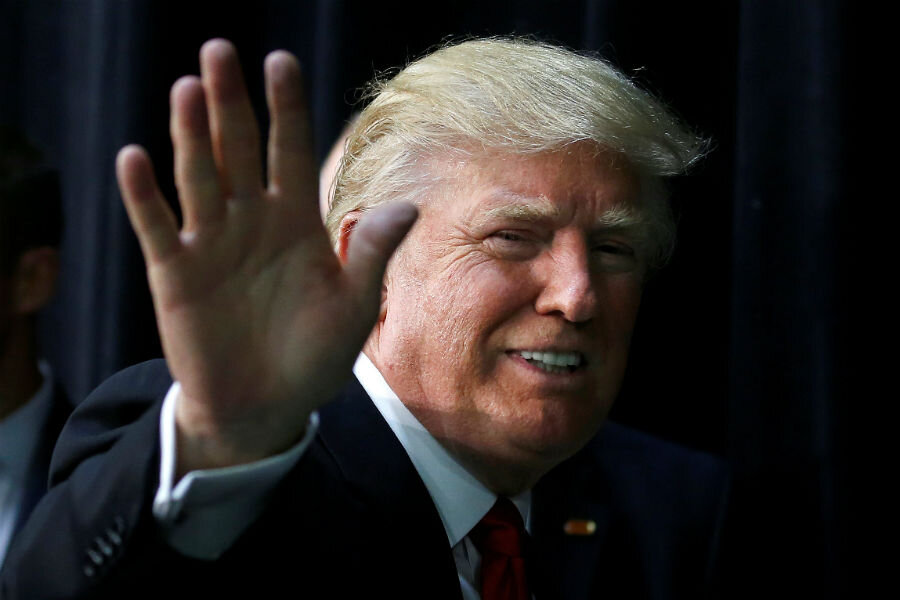At last, Trump's ad buys usher in a new stage for 2016 race
Loading...
Donald Trump’s first television ad of the general election debuted on Friday, doubling down on the Republican candidate’s previous admonitions over immigration and terrorism. As Mr. Trump has sought to do throughout his campaign, “Two Americas: Immigration” highlights him as the bearer of simple, thorough fixes.
“Terrorists and dangerous criminals kept out,” it promises. “The border secured. Our families safe. Change that makes America safe again.”
The ad’s airing is a change of tack for the Republican candidate, whose campaign had previously spent exactly $0 on television spots so far this election season, compared to $61 million by the Clinton campaign – although outside affiliates have run about $12 million worth for him, and $43 million for her. Now, Trump’s campaign is set to run almost $5 million in ad spots in the battleground states of Ohio, Pennsylvania, Florida, and North Carolina, according to Bloomberg.
“He seems to be pivoting to a more conventional general-elections strategy,” says Pat Meirick, director of the Political Communication Center at the University of Oklahoma. “We’ll see if he can stick to it.”
It could kick off a season of unusually persistent negative ads from both candidates. Some studies show that negative ads often make the viewer think poorly not just of the object of the attack, but of the candidate who delivers it. But both Clinton and Trump are unprecedentedly unpopular, meaning that the campaigns' strategy may aim less at convincing the undecided public of their candidate's merits than of the opponent's flaws.
“There’s always going to be a mix. You’re going to try to sell your candidate and their ideas, attack the opposing candidate, and make a comparison on specific points where you’re strong and they’re weak,” Dr. Meirick tells The Christian Science Monitor. “But the mix is going to alter this year.”
“These are the two general elections candidates with lowest favorability ratings basically ever, so it’s going to be easier to attack and have those attacks resonate than to try to build their own favorability.”
Larry Sabato, a professor of politics at the University of Virginia, told the Los Angeles Times that the campaigns would be “scorched-earth.”
“They both have 100% name ID and voters have a sense of who they are,” he said. “They don't have to advertise in ways that other candidates do. They are not going to have to tell the family story. It's pointless. They will still need negative advertising.”
Some political scientists doubt the value of traditional political ads. One 2013 study found that the effects of a presidential campaign ad disappeared within a few days after its airing. Still, as co-author Lynn Vavreck wrote in The New York Times in June, even the small, rapidly “decaying” influence of ads can matter at the polls – and affect candidates' viability at large.
“Even though the effects from an ad imbalance are small and go away fast, candidates cannot allow them to pile up,” wrote Dr. Vavreck, a political scientist at the University of California, Los Angeles.
Trump’s aversion to ad spending dates back to the inception of his campaign strategy. In February, Politico reported that as far back as 2013, at a meeting with New York political operatives who wanted him to run for governor, Trump spurned their advances, instead outlining an ad-less path to the presidency in 2016 – one predicated on the power of “earned media.”
It’s a model unlikely to be replicated in future campaigns, says Meirick. “[The race] isn't going very well. Also he’s a unique candidate and hard to imitate. I don’t think he’s really changed the conventional wisdom on how it should be done in the general election.”






